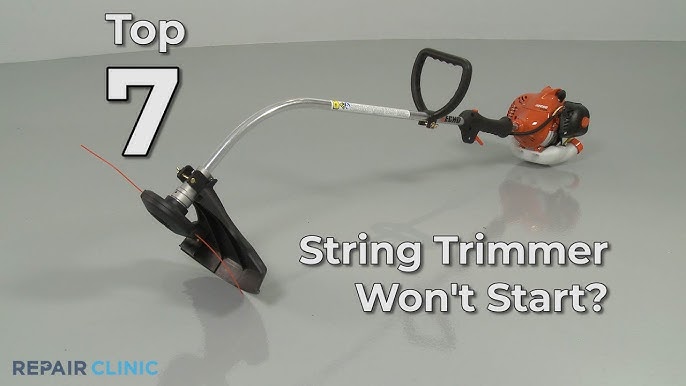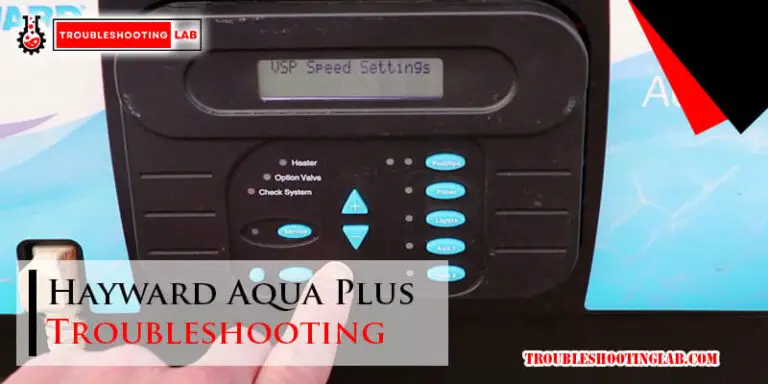Aquarite S3 Troubleshooting Guide: Master Pool Maintenance
Are you frustrated with your Aquarite S3 system acting up? You’re not alone.
Pool maintenance can be a real headache, especially when things don’t go as planned. But don’t worry—your solution is right at your fingertips. This troubleshooting guide is here to help you tackle those pesky issues head-on, ensuring your pool stays crystal clear and inviting.
Imagine the peace of mind you’ll have once you understand exactly what’s going wrong and how to fix it. Dive in, and let’s get your Aquarite S3 back to its best performance, ensuring those relaxing swims and weekend pool parties go off without a hitch.
Common Issues
Aquarite S3 systems often face issues like inaccurate salt readings and low chlorine production. Troubleshooting these problems typically involves checking sensor connections and inspecting salt cell cleanliness. Proper maintenance can resolve many of these common issues, ensuring the system operates efficiently.
When you’re enjoying the refreshing waters of your pool, the last thing you want is a technical hiccup with your Aquarite S3 system. But like any advanced technology, it can sometimes run into issues. Understanding common problems can save you time and stress, ensuring you spend more time swimming than troubleshooting. Let’s dive into the typical challenges you might face and how to address them effectively.
Error Codes
Error codes can seem like cryptic messages, but they are your system’s way of communicating. These codes pinpoint specific issues that need your attention. For instance, if you see an error code like “Check Salt,” it might indicate that the salt level is too low or high. Ensure your salt level is between 2700-3400 ppm for optimal performance. Another common code, “Low Temp,” warns you when the water temperature is below 50°F. Adjusting your pool heater can resolve this. Do you remember a time when a simple error code saved you from a bigger issue? That’s the power of understanding these signals.
System Alerts
System alerts act as your early warning system. They notify you of potential issues before they become big headaches. A frequent alert is “No Flow,” which usually means there’s a problem with the water circulation. Check if your pump is running properly and inspect the filter for any blockages. “Inspect Cell” is another alert you might encounter. This suggests that the electrolytic cell might need cleaning due to calcium build-up. Regular maintenance can prevent this alert from appearing too often. Have you noticed how timely alerts can prevent costly repairs? Keeping an eye on these alerts can save you money and keep your pool pristine. By understanding these common issues with your Aquarite S3, you’re better prepared to tackle them head-on. So, are you ready to become the master of your pool’s maintenance?

Water Chemistry Problems
Maintaining the right water chemistry ensures a clean and safe pool. Aquarite S3 can face challenges with water chemistry, affecting pool quality. Addressing these issues keeps your pool sparkling and healthy.
Ph Imbalance
pH imbalance can cause irritation. A low pH leads to acidic water. This can damage equipment and irritate skin. Check pH levels regularly. Aim for a pH between 7.2 and 7.8. Use pH increasers or reducers as needed.
Chlorine Levels
Chlorine is crucial for killing bacteria. Low chlorine levels make water unsafe. High levels can cause eye irritation. Test chlorine levels weekly. Adjust using chlorine tablets or liquid chlorine. Keep levels between 1 and 3 ppm for safe swimming.
Equipment Malfunctions
Dealing with equipment malfunctions can be a real headache, especially when it disrupts your pool maintenance routine. Understanding common issues like pump failures and filter blockages can save you time and frustration. Let’s dive into these problems and discover practical solutions to get your Aquarite S3 system back on track.
Pump Failures
Imagine you’re ready for a refreshing swim, but the pool pump refuses to start. It’s a scenario many pool owners face. Pump failures might be due to electrical issues or mechanical wear and tear. Always check the power source first. Is the pump plugged in correctly? Is the circuit breaker tripped?
If the power supply is intact, inspect the pump motor. Listen for unusual noises. A humming sound might indicate a jammed impeller. In this case, you might need to remove debris or replace worn-out parts. Regular maintenance can prevent these issues from occurring.
Have you ever wondered if your pump is the right size for your pool? A mismatch can cause performance issues. Verify the specifications of your pump and ensure it suits your pool’s capacity. This simple check can make a world of difference.
Filter Blockages
Filter blockages can turn your crystal-clear water into a cloudy mess. They often result from accumulated dirt or debris. Regular cleaning is your best defense. Rinsing the filter elements can improve water flow and efficiency.
While cleaning, inspect for any signs of damage. Cracks or holes in the filter can lead to poor filtration. Replacing damaged filters promptly will keep your system running smoothly. Have you considered a routine cleaning schedule? It can prevent blockages from becoming a recurring issue.
Do you notice fluctuating water pressure in your pool? This could signal a blockage. Keep an eye on the pressure gauge. If readings are off, it might be time to clean or replace the filter. Addressing these signs early can prevent bigger problems down the road.
Equipment malfunctions don’t have to ruin your pool experience. By tackling pump failures and filter blockages with practical solutions, you can maintain a well-functioning Aquarite S3 system. What’s your go-to strategy for troubleshooting pool equipment? Share your tips and experiences in the comments below!
Electrical Issues
Aquarite S3 Troubleshooting Guide offers simple solutions for electrical issues. Common problems include power failures and faulty wiring. Follow easy steps to ensure your system runs smoothly.
Electrical issues are a common concern for Aquarite S3 users. When your pool equipment suddenly stops working or behaves erratically, it can be frustrating. Understanding these electrical problems can save you time and stress. Let’s dive into some typical electrical challenges and how to address them.
Power Supply Problems
One of the first places to check when your Aquarite S3 isn’t working is the power supply. Is the device plugged in properly? Double-check that the power cord is securely connected to both the device and the outlet. A loose connection can easily cause interruptions. Look at your power outlet. Is it functioning? You can test it by plugging in another device, like a lamp. If that device works, the outlet is fine. If not, you might need an electrician to inspect your power source. Another tip is to look at the power cord itself. Are there any visible damages like fraying or cuts? A damaged cord can lead to power issues. If you notice anything unusual, consider replacing the cord to ensure consistent power supply.
Circuit Breaker Trips
Does your circuit breaker trip frequently when using the Aquarite S3? This can be a sign of an overload. Check if there are too many devices connected to the same circuit. It’s often best to have pool equipment on a dedicated circuit. Inspect the breaker panel. Does it feel warm? This might indicate a more serious electrical issue that needs professional attention. Don’t hesitate to contact a licensed electrician if you suspect any irregularities. Consider the possibility of a short circuit. If your circuit breaker trips immediately after resetting, it might be due to a short. This is typically caused by faulty wiring or damaged components within the Aquarite S3. Seeking professional help is crucial here to prevent further damage. When you face electrical issues with your Aquarite S3, it’s important to act swiftly. Ignoring these problems can lead to bigger headaches down the line. Have you experienced any electrical challenges with your pool equipment? How did you resolve them? Share your experiences and tips in the comments below.
Sensor Troubles
Sensors play a crucial role in maintaining your Aquarite S3 system. They ensure smooth operations by providing key data. But sensors can sometimes face issues. Resolving these quickly is essential for optimal performance. This guide will help you tackle common sensor problems.
Temperature Sensor Errors
Temperature sensors monitor pool water heat levels. Faulty readings can disrupt your system. First, check the sensor connection. Loose wires may cause errors. Ensure they are firmly attached. Next, inspect the sensor for damage. Cracks or corrosion can affect accuracy. If the sensor looks damaged, replacement might be necessary. Regular calibration is also important. This ensures consistent, accurate readings.
Flow Sensor Malfunctions
Flow sensors detect water movement in your system. A malfunction can lead to system shutdowns. Start by examining the sensor for blockages. Debris can obstruct flow, causing errors. Clean the sensor carefully to remove any blockages. Also, verify the sensor’s position. It should be aligned correctly in the flow path. An incorrect position might affect its function. If issues persist, check the wiring. Loose connections can lead to false readings. Secure the wires for reliable performance.
Routine Maintenance Tips
Regular maintenance ensures your Aquarite S3 runs smoothly. These tips help avoid common issues. Follow them for optimal performance.
Cleaning Procedures
Clean the cell regularly. This prevents calcium buildup. Calcium affects performance. Use a mild acid solution. It safely removes deposits. Rinse thoroughly with water. Ensure no acid residue remains.
Check the filter system. Remove debris to maintain flow. This helps the system operate efficiently. Clean the filter often. Use fresh water for best results.
Regular Inspections
Inspect wiring connections. Look for loose or corroded wires. Tighten loose connections. Replace corroded wires promptly. This ensures proper electrical flow.
Examine the control panel. Check for error codes or warnings. Address these issues early. Prevent potential system failures. Keep the manual handy for reference.
Monitor water chemistry. Test chlorine levels regularly. Adjust settings as needed. This keeps your pool safe and clean. Proper balance avoids equipment strain.
Advanced Troubleshooting
Advanced troubleshooting for the Aquarite S3 can solve persistent issues. This guide helps diagnose and resolve complex problems. It focuses on software updates and component replacements. These strategies ensure your system runs efficiently. Let’s explore how to tackle these advanced challenges.
Software Updates
Software updates keep the Aquarite S3 functioning smoothly. Check for updates regularly. Updated software often fixes bugs and improves performance. Visit the manufacturer’s website for the latest downloads. Follow the instructions carefully during installation. Avoid skipping any steps. A successful update can eliminate many common issues.
Component Replacements
Faulty components can disrupt the Aquarite S3’s operation. Identifying and replacing these parts is crucial. Begin by inspecting each component closely. Look for signs of wear or damage. Replacing defective parts can restore your system’s function. Use original parts for compatibility. Consult the user manual for guidance. Proper installation ensures long-lasting performance.
Professional Assistance
Aquarite S3 Troubleshooting Guide offers clear solutions for pool system issues. This guide helps identify problems swiftly and provides straightforward steps to ensure smooth operation. Enhance your pool experience with reliable, easy-to-follow advice.
When dealing with your Aquarite S3, there are times when you might need professional assistance. Understanding when to seek expert help can save you time and prevent costly mistakes. Professional technicians bring specialized knowledge and experience that can be invaluable when you’re facing complex issues.
When To Call A Technician
Sometimes, troubleshooting your Aquarite S3 can feel like an uphill battle. If you’re experiencing persistent problems that don’t seem to resolve with basic adjustments, it might be time to call a professional. For instance, if the system is not generating chlorine even after resetting, a technician’s insight could be crucial. Unusual noises or leaks are also signs that require expert attention. You don’t want a small issue to escalate into something bigger and more expensive. Moreover, if you’re unsure about the electrical components, it’s best to leave it to the professionals to avoid any safety hazards.
Choosing A Reliable Service
Finding the right technician doesn’t have to be a daunting task. Start by asking for recommendations from friends or neighbors who own similar systems. Word-of-mouth referrals often lead to trustworthy services. Check online reviews and ratings to gauge the reliability of potential service providers. Look for technicians who are certified and have experience specifically with Aquarite systems. It’s crucial to ensure they are knowledgeable about the latest models and updates. Don’t hesitate to ask questions when contacting a service. Inquire about their experience, rates, and warranty policies. A reliable technician will be transparent and provide clear answers. Remember, the goal is to find someone who can effectively resolve your issues and offer peace of mind. By knowing when to call for help and choosing the right service, you can ensure your Aquarite S3 remains in top condition. Have you ever regretted not seeking professional help sooner?

Frequently Asked Questions
How To Reset Aquarite S3?
To reset Aquarite S3, turn off the power. Wait a few minutes. Turn it back on.
Why Is My Aquarite S3 Not Generating Chlorine?
Check salt levels. Ensure proper water flow. Inspect cell for damage or debris.
What Does The Aquarite S3 Error Code Mean?
Error codes indicate specific issues. Refer to the manual for solutions.
How To Clean Aquarite S3 Cell?
Turn off power. Remove the cell. Use a mild acid solution to clean deposits.
How Often Should I Service Aquarite S3?
Service it every three months. Check salt levels, clean the cell, and inspect parts.
Conclusion
Troubleshooting your Aquarite S3 can seem daunting at first. But, with the right steps, you can handle most issues. Regular maintenance keeps your system running smoothly. Always check connections and settings. Seek professional help if problems persist. Remember, patience is key in resolving technical issues.
Your pool will be back to its sparkling best soon. Keep this guide handy for future reference. Happy swimming!





